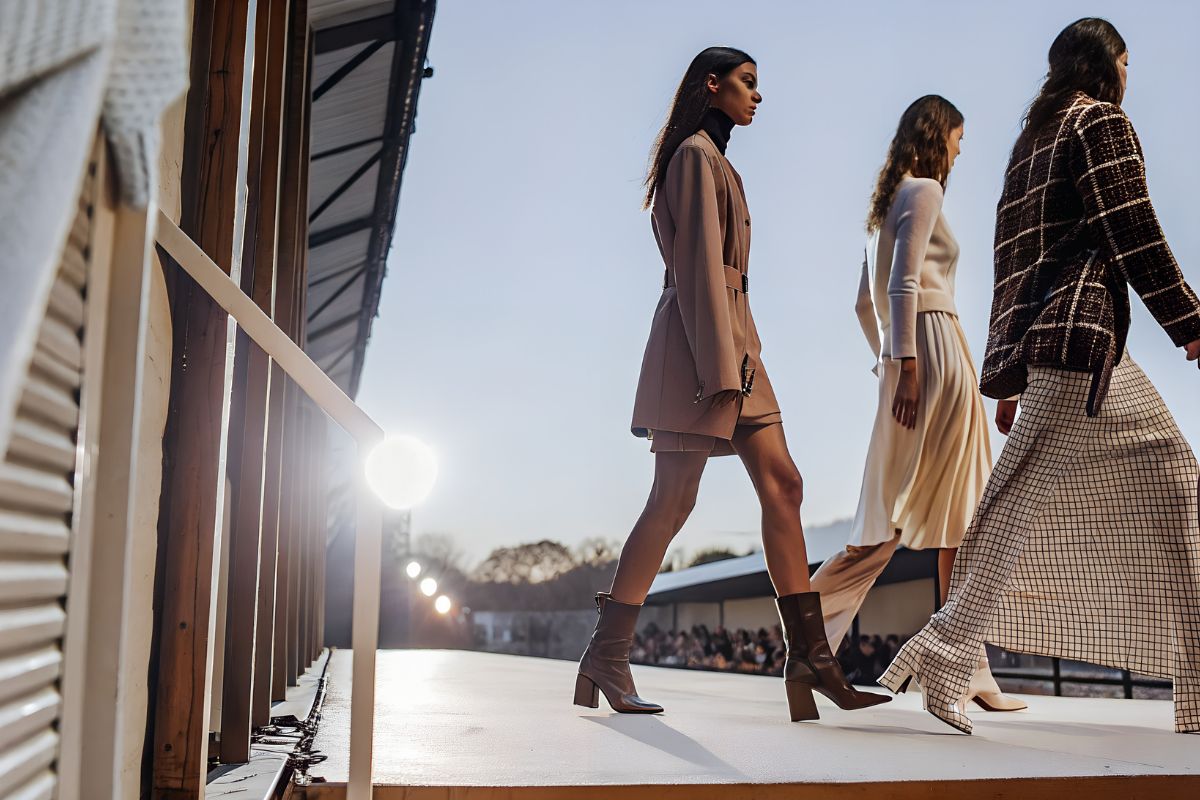How Fashion Trends Reflect Cultural Values

Fashion often acts as a visual language of culture, encoding the values, beliefs, and social changes of its time. Clothing can signal personal and group identity, and even when styles seem purely aesthetic, they usually trace back to broader cultural currents. For instance, African commemorative textiles “mirror local cultures” by using colors and patterns to express social status and heritage. Similarly, the 1920s flapper look – with its short skirts, bobbed hair, and loose silhouettes – emerged amid waves of social change. As historians note, the post–World War I era saw “a seismic wave of social change and economic prosperity”, including women’s suffrage and new freedoms. Young women “rebelled against fashionable society” by rejecting restrictive corsets and long hemlines. In short, fashion trends – from traditional costumes to avant-garde street styles – often both reflect and shape a culture’s prevailing values and tensions.
Women’s Liberation and the Flapper (1920s)
In the 1920s, women’s fashion changed dramatically to reflect new social roles. The iconic flapper style featured straight, loose dresses hitting above the knee, low waists, and shorter hair. This look symbolized women’s rejection of Victorian-era constraints: they cut their hair and raised their hems, abandoning corsets for freedom of movement. Flapper fashions were not just aesthetic but tied to values of independence and modernity. Young working women (“garçonne” or “bachelor girls”) embraced the style to express their new rights (voting, education, work) and a carefree “live fast” attitude. As one historian observes, 1920s flappers exemplified “new gender ideologies” by defying older norms – they even rolled down their stockings and exposed knees in public. In this way, the flapper trend both challenged restrictive social etiquette and communicated a cultural shift toward female empowerment and rebellion.
Counterculture and Social Change (1960s–1970s)
The 1960s and early 1970s brought another fashion revolution tied to broad political and cultural upheavals. Youth movements rejected mainstream conformity, and their clothing choices signaled those values. Hippie fashion adopted loose, hand-dyed or “natural” fabrics – tie-dye T‑shirts, flowing maxi skirts, peasant blouses and sandals – as a rejection of mass-produced uniforms. Many counterculture figures “favored natural materials over synthetic fabrics” and embraced second-hand or handmade clothes. For example, Western youth imported Afghan coats and Palestinian embroidered dresses, blending non-Western textiles into their wardrobes as symbols of global solidarity and anti-imperialist sentiment. These eclectic garments reflected ideals of peace, ethnic harmony, and openness.
Simultaneously, rock stars and bohemian icons blurred gender and class codes: flamboyant men’s wardrobes featured lace, velvet, and tunics. As one historian notes, Mick Jagger’s billowing tunics and lace shirts – designed by Michael Fish – “mirrored the era’s sexual liberation and blurring of gendered dress codes.” Influential style figures like Anita Pallenberg mixed Victorian velvets, Native American jewelry, and thrifted furs, setting a blueprint for bohemian fashion. In sum, 1960s countercultural fashion challenged authority and hierarchy – it elevated folk and ethnic styles and relaxed conventions to reflect values of freedom, equality, and protest.
Power Dressing and Changing Gender Roles (1980s)
By the 1980s, clothing again signaled shifts in social roles – this time in the business world. As women increasingly joined corporate and professional fields, their fashion reflected ambition and authority. The so-called “power suit” emerged: highly structured jackets (often with padded shoulders and nipped waists), paired with matching trousers or skirts, in bold colors. Vogue explains that by the mid-1980s, “women wanted power, and they were dressing the part.” Designers like Claude Montana and Thierry Mugler created suits with exaggerated shoulders and double-breasted cuts that “wore like armor,” sending a clear message of confidence. Such attire marked a change in cultural expectations – it was not aiming to erase femininity, but rather to assert it in traditionally male spaces.
As one magazine editorial quipped, power-dressed women literally towered over men, symbolizing “different way of looking at fashion … Women … dressing to be noticed…and to gain the upper hand.”. In short, 1980s office fashion reflected the feminist breakthroughs of prior decades (like equal credit laws) and reinforced a new norm: that professional success and authority were no longer reserved for men.
Global Traditions and Political Symbols
Fashion also reinforces identity through traditional or officially sanctioned dress. In many cultures, customary clothing carries deep cultural meanings. For example, African commemorative fabrics (such as Ghanaian kente cloth or Nigerian aso-oke) use specific patterns and motifs to celebrate community heroes or historical events. Scholars note that these textiles are “mirrors of local cultures expressing social status, political authority, and economic worth,” playing a “crucial role in shaping collective memory”. By wearing such cloth, individuals publicly signal their heritage and group membership. In short, these traditional fashions reinforce communal values and history across generations.
Political ideology can also become dress code. In mid-century Asia, for instance, the Chinese “Mao suit” (Zhongshan suit) was adopted as a national symbol. After 1949, Mao Zedong and Communist officials wore this uniform‐like suit “as a symbol of proletarian unity and an Eastern counterpart to the Western business suit”. The plain, unembellished design – four pockets symbolizing virtues and identical cut for all – was meant to reject class privilege and convey egalitarian Communist values. Decades later Chinese leaders still don Mao suits on formal occasions “as a symbol of national sovereignty,” analogous to a military uniform or royal dress. In this way, the Mao suit reinforced the ruling ideology through a shared visual identity.
Sustainability and Modern Values (2000s–Present)
In recent decades, fashion trends have also begun reflecting values like environmental responsibility and ethics. The rise of sustainable fashion signals a cultural shift toward conscious consumption. From the 1970s on, activists and subcultures have increasingly embraced thrifting and eco-friendly materials. For instance, the “slow fashion” movement (popularized in the 2000s) explicitly advocates ethical labor practices and environmental responsibility. Events like the 2013 Rana Plaza disaster – which exposed unsafe conditions in fast fashion factories – catalyzed a worldwide push for accountability in clothing supply chains. Today, many consumers demand transparency and prefer brands that align with their values. Analysts report that by the 2020s “ethics and sustainability [have become] a key factor in purchasing decisions”. Trends like the resurgence of thrifting (second-hand shopping) and innovative eco-materials (biodegradable fabrics, vegan leather) illustrate these priorities. In essence, modern style choices now often signal allegiance to environmentalism and social justice, just as 1920s flapper dresses signaled women’s freedom.
Reinforcing Norms and Challenging Them
Throughout history, fashion has played both sides of the cultural coin – it can reinforce prevailing norms or challenge them. Uniforms, dress codes, and traditional costumes typically reinforce group values. By contrast, subcultural or countercultural styles often contest mainstream standards. For example, we saw that 1920s flappers and 1960s mods deliberately flouted their elders’ ideas of femininity. Scholars note that “flappers and mods both reflected the revolutionary movements, social progress, and changing gender roles of their times,” ultimately challenging old conventions. Conversely, business suits and national dress can perpetuate hierarchy and unity. The same bold shoulder pads that challenged norms in the 1980s eventually became acceptable even on boardroom runways (see recent power-suit revivals). Likewise, commemorative textiles uphold historical memory and communal identity. In every era, what people wear – whether ordinary or outrageous – communicates messages about conformity, authority, and resistance.






